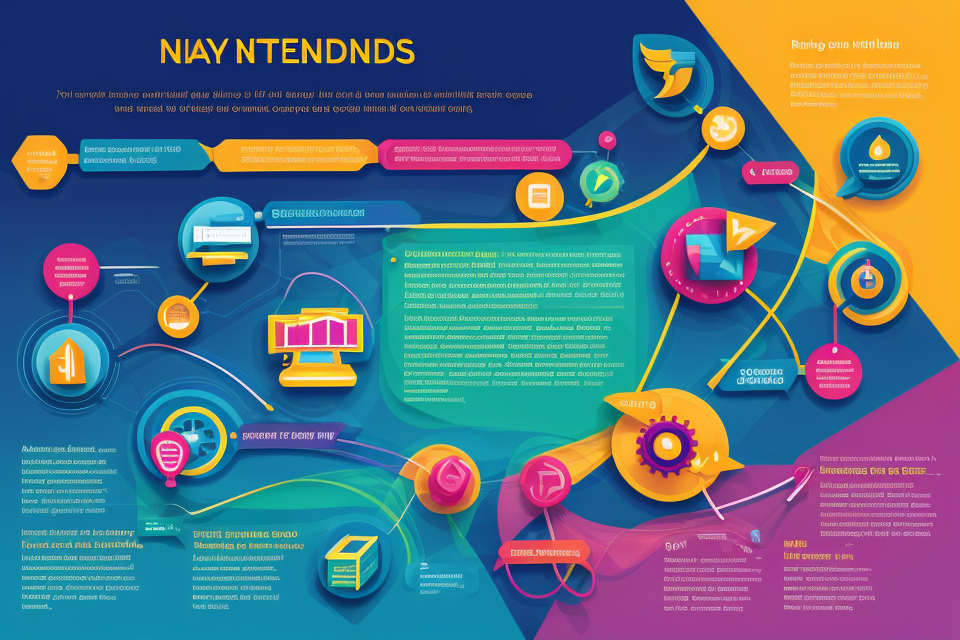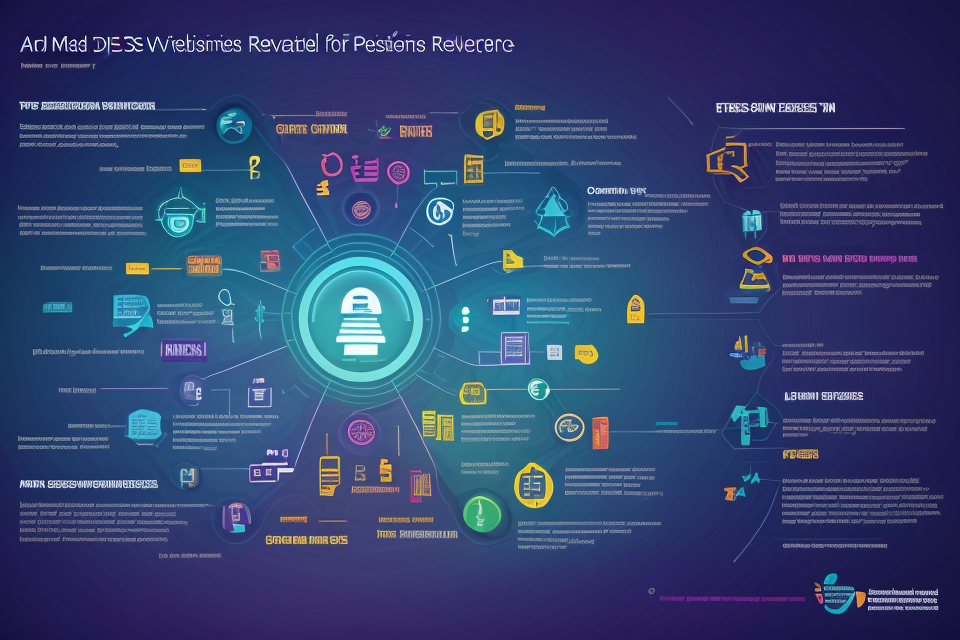Data science is a field that has been gaining traction in recent years, but when did it actually become a thing? This question may seem simple, but the answer is not as straightforward as one might think. Data science is a multidisciplinary field that combines mathematics, statistics, computer science, and domain-specific knowledge to extract insights from data. The concept of data science has been around for decades, but it was not until the explosion of big data in the 21st century that it became a recognized and respected field. With the increasing importance of data in business and society, data science has become a critical tool for decision-making and problem-solving. In this article, we will explore the history of data science and how it has evolved over time. So, let’s dive in and discover when data science became a thing.
Data science as a field has its roots in the 1960s, but it wasn’t until the early 2000s that it really began to take off. The advent of big data and the increased availability of computational power and data storage capabilities helped to fuel the growth of data science. As more and more data became available, organizations began to see the value in analyzing this data to gain insights and make better-informed decisions. Today, data science is a rapidly growing field with a wide range of applications across many industries.
The Emergence of Data Science
The Early Years
The Birth of Data Analysis
Data analysis as a field can be traced back to the 1960s, where early computers were used to process and analyze large datasets. This marked the beginning of the use of computers for data analysis, which laid the foundation for the development of data science as a discipline.
The Role of Computers in Data Processing
The development of computers played a crucial role in the emergence of data science. The ability to process large amounts of data quickly and efficiently enabled the analysis of complex datasets, which was previously not possible. The increasing computing power and the ability to store large amounts of data in a digital format also contributed to the growth of data science.
The Influence of Statistics on Data Science
Statistics has been a key component in the development of data science. Early statisticians such as Abraham Wald and Florence Nightingale used data analysis to uncover insights and make decisions. Their work laid the foundation for the use of statistical methods in data science, which continues to be a critical aspect of the field today. The use of statistical methods such as regression analysis, hypothesis testing, and machine learning algorithms are all key components of modern data science.
The Dawn of the Digital Age
The emergence of data science as a field can be traced back to the dawn of the digital age. This period, which spans from the 1950s to the present day, has seen the exponential growth of data, the evolution of data collection methods, and the development of advanced analytics and machine learning techniques. These factors have combined to create the perfect storm for the rise of data science as a critical component of modern business and society.
The Growth of Big Data
One of the key drivers of the growth of data science is the massive increase in the amount of data being generated and stored. The digital age has led to the creation of vast amounts of data from a wide range of sources, including social media, e-commerce, and IoT devices. This growth in data has been accelerated by the widespread adoption of cloud computing, which has made it easier and more cost-effective to store and process large amounts of data.
The Evolution of Data Collection Methods
Alongside the growth of big data, there has been a significant evolution in the methods used to collect data. In the early days of computing, data was primarily collected through manual processes such as paper surveys and customer feedback forms. However, with the rise of the internet and the widespread adoption of smartphones, data can now be collected automatically through digital channels such as social media, web analytics, and mobile apps.
The Advancements in Analytics and Machine Learning
As the amount and variety of data has increased, so too has the need for advanced analytics and machine learning techniques to make sense of it all. The development of algorithms and statistical models has enabled businesses to extract insights from their data and make informed decisions based on those insights. This has led to the widespread adoption of data-driven decision-making across a wide range of industries, from finance to healthcare to retail.
Overall, the dawn of the digital age has created a world where data is everywhere, and its importance continues to grow. The combination of big data, evolving data collection methods, and advancements in analytics and machine learning has paved the way for the rise of data science as a critical component of modern business and society.
The Evolution of Data Science
The Expansion of Data Science Applications
The Role of Data Science in Business
- Predictive Analytics: Data science has revolutionized business by providing insights through predictive analytics. By analyzing customer behavior, preferences, and purchase patterns, companies can make data-driven decisions to improve their products, services, and marketing strategies.
- Sales and Marketing Optimization: Data science helps businesses optimize their sales and marketing efforts. By analyzing customer data, companies can identify high-value customers, target their marketing campaigns more effectively, and personalize customer experiences.
- Supply Chain Management: Data science has also been applied to supply chain management, allowing businesses to optimize their operations and reduce costs. By analyzing data on suppliers, inventory, and transportation, companies can identify inefficiencies and make data-driven decisions to improve their supply chain performance.
The Impact of Data Science on Healthcare
- Patient Care: Data science has improved patient care by enabling doctors and healthcare providers to make more informed decisions. By analyzing patient data, healthcare professionals can identify patterns and trends that can help diagnose diseases, predict potential health problems, and develop personalized treatment plans.
- Clinical Trials: Data science has also been applied to clinical trials, improving the efficiency and effectiveness of drug development. By analyzing data from clinical trials, researchers can identify patterns and trends that can help optimize drug development and improve patient outcomes.
- Population Health Management: Data science has also been applied to population health management, allowing healthcare providers to analyze data on a population-wide scale. By analyzing data on factors such as lifestyle, environment, and healthcare utilization, healthcare providers can identify patterns and trends that can help improve population health outcomes.
The Use of Data Science in Government and Public Policy
- Public Safety: Data science has been applied to public safety, allowing governments to analyze data on crime rates, traffic accidents, and other safety-related issues. By analyzing this data, governments can identify patterns and trends that can help improve public safety outcomes.
- Economic Development: Data science has also been applied to economic development, allowing governments to analyze data on economic indicators such as GDP, employment, and inflation. By analyzing this data, governments can identify patterns and trends that can help inform economic policy decisions.
- Citizen Services: Data science has also been applied to citizen services, allowing governments to analyze data on citizen engagement, satisfaction, and feedback. By analyzing this data, governments can identify patterns and trends that can help improve citizen services and public policy outcomes.
The Technological Advancements in Data Science
The Rise of Cloud Computing
Cloud computing has revolutionized the way data science is conducted. With the advent of cloud computing, data scientists can now access and process vast amounts of data without having to worry about storage or processing power limitations. This has enabled them to work with larger datasets and more complex models, leading to more accurate predictions and insights.
The Increasing Power of Artificial Intelligence
Artificial intelligence (AI) has been a key driver in the development of data science. AI algorithms and machine learning techniques have enabled data scientists to automate many tasks, such as data cleaning and preprocessing, and to develop more sophisticated models that can make predictions based on complex patterns in the data. As AI continues to advance, it is likely to play an even more important role in data science, driving the development of new methods and tools for data analysis and modeling.
The Emergence of Blockchain Technology
Blockchain technology has the potential to transform data science by providing a secure and decentralized way to store and share data. This could enable data scientists to work with data that is more diverse and representative, as well as to collaborate more effectively with other researchers and organizations. Additionally, blockchain technology could be used to create new types of data markets, where data can be bought and sold in a transparent and secure manner, providing new opportunities for data monetization and sharing. Overall, the emergence of blockchain technology is likely to have a significant impact on the future of data science, enabling new applications and use cases that were previously not possible.
The Future of Data Science
The Continued Growth of Data Science
The Increasing Importance of Data Science in Business
In recent years, the importance of data science in business has skyrocketed. With the rise of big data, companies have been able to collect vast amounts of information about their customers, operations, and products. This data has the potential to provide valuable insights that can inform business decisions and drive growth. As a result, data science has become an essential tool for businesses looking to stay competitive in today’s market.
The Expansion of Data Science Applications
Data science has also expanded its applications beyond business. In healthcare, for example, data science is being used to develop personalized treatments, predict disease outbreaks, and improve patient outcomes. In government, data science is being used to improve public services, optimize resource allocation, and promote transparency. The possibilities for data science applications are virtually endless, and its continued growth is likely to transform industries and societies in the years to come.
The Development of New Technologies
The continued growth of data science is also driven by the development of new technologies. Advances in machine learning, artificial intelligence, and cloud computing have made it easier and more efficient to collect, store, and analyze large amounts of data. These technologies have also enabled the development of new tools and techniques for data analysis, such as deep learning and natural language processing. As these technologies continue to evolve, data science is likely to become even more powerful and versatile, with new applications and opportunities emerging all the time.
The Challenges Ahead for Data Science
The Need for Data Privacy and Security
As data science continues to advance, the need for data privacy and security becomes increasingly important. With the vast amount of data being collected and analyzed, there is a growing concern about the potential misuse of personal information. This has led to the development of new technologies and regulations aimed at protecting individual privacy. For example, the European Union’s General Data Protection Regulation (GDPR) sets strict guidelines for the collection and use of personal data. As a result, data scientists must now consider the ethical implications of their work and take steps to ensure that personal information is protected.
The Importance of Ethical Considerations in Data Science
Along with the need for data privacy and security, ethical considerations are becoming increasingly important in data science. As data scientists have access to large amounts of personal information, they must be mindful of the potential impact of their work on individuals and society as a whole. This includes considering issues such as bias in algorithms, the potential for discrimination, and the impact of automated decision-making on employment and other areas of life. In order to address these ethical concerns, data scientists must work closely with other professionals, such as lawyers and social scientists, to ensure that their work is conducted in an ethical and responsible manner.
The Need for Interdisciplinary Collaboration
As data science continues to evolve, it is becoming increasingly clear that interdisciplinary collaboration is essential for success. Data science is a complex field that requires expertise in a wide range of areas, including computer science, statistics, mathematics, and domain-specific knowledge. In order to tackle complex problems and develop innovative solutions, data scientists must work closely with experts from other fields. This may involve collaborating with social scientists to understand the social implications of data analysis, or working with engineers to develop new technologies for data collection and analysis. By fostering interdisciplinary collaboration, data scientists can leverage the strengths of experts from different fields to drive innovation and solve complex problems.
The Impact of Data Science on Society
The Transformation of Industries through Data Science
Data science has had a profound impact on various industries, transforming the way businesses operate and make decisions. For instance, retail companies utilize data science to analyze customer behavior and preferences, enabling them to personalize their offerings and improve the shopping experience. Similarly, healthcare organizations employ data science to analyze patient data and develop personalized treatment plans, leading to better patient outcomes.
The Creation of New Job Opportunities
The rise of data science has also led to the creation of new job opportunities across various sectors. According to a report by IBM, the demand for data science skills has increased by 250% in the past five years, with roles such as data scientist, data engineer, and data analyst becoming increasingly popular. This trend is expected to continue as more businesses recognize the value of data-driven decision-making.
The Role of Data Science in Addressing Global Challenges
Data science has also played a crucial role in addressing global challenges such as climate change, poverty, and disease outbreaks. For example, data science can be used to analyze satellite images to track deforestation and predict natural disasters. Additionally, data science can be used to identify patterns in disease outbreaks, enabling public health officials to respond more effectively. By harnessing the power of data science, we can work towards solving some of the world’s most pressing problems.
FAQs
1. When did data science become a recognized field?
Data science as a recognized field emerged in the 1960s. The term “data science” was first coined by John W. Tukey, an American mathematician and statistician, in 1961. However, it wasn’t until the 1990s that data science gained widespread recognition as a field of study, due in part to the rapid growth of the internet and the resulting explosion of data.
2. How has the field of data science evolved over time?
The field of data science has evolved significantly over the past few decades. In the early days, data science was primarily focused on statistical analysis and modeling. However, with the advent of new technologies and the increasing availability of large datasets, data science has become much more interdisciplinary, encompassing fields such as computer science, mathematics, statistics, and machine learning. Today, data science is used in a wide range of industries, from finance and healthcare to marketing and social media.
3. What role does data science play in modern society?
Data science plays a crucial role in modern society, as it helps organizations make sense of the vast amounts of data that are generated every day. Data science is used to extract insights from data, make predictions, and drive decision-making. It is used in a wide range of applications, from personalized medicine and fraud detection to self-driving cars and recommendation systems. In short, data science has become an essential tool for businesses, governments, and individuals looking to make sense of the world around them.
4. Who are some notable figures in the history of data science?
There have been many notable figures in the history of data science, including pioneers such as Alan Turing, John von Neumann, and Claude Shannon. More recently, data scientists such as Hal Varian, Jure Leskovec, and DJ Patil have made significant contributions to the field. Additionally, the rise of open-source software and online communities has enabled many more people to participate in data science and contribute to its ongoing development.



